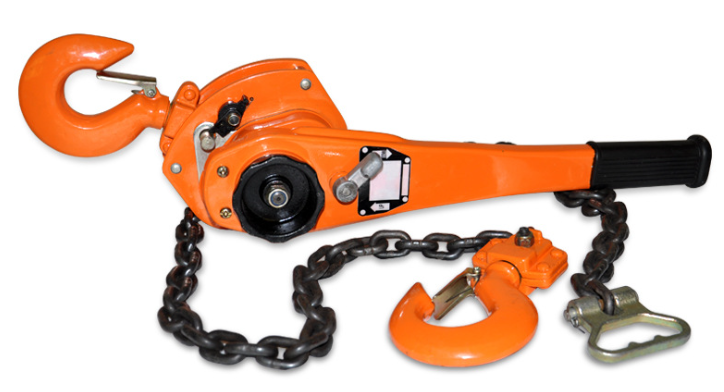
The information of application and safety for lever hoist operators
Keyword:lever hoist Time:2018-12-16 8:57:21
A potentially hazardous situation can be created if lever hoists are not being operated correctly, and this will result in serious injury, or even death.
The following is the information of application and safety for lever hoist operators.
Application information
1. Lubricate the load chain along with whole length with machine oil
2. Confirm that the supporting structure is strong enough to support the full rated capacity of the lever hoist with a generous factor of safety.
3. Examine the load chain to ensure that there is no twist. When your lever hoist is such as 6 ton that lifts on 2 falls of load chains, twists can arise from the bottom hook being accidentally turned over through the load chains.
4. Inspect carefully for any damage that may occur during shipping. Check for loose, missing, or damaged parts.
Safety information
Extreme temperatures will affect the durability of the lever hoist. In subzero temperatures loads must be lifted and lowered very slowly and carefully.
Keep the load within the rated capacity marked on the lever hoist. An excess load may lead to an accident. The lever hoist is overloaded when the pulling effort indicated in the standard specifications is exceeded.
The selector lever must be set to the “UP” position when the lever hoist is under a load during hoisting or pulling.
Before operating, lift and lower the load about 4" and test the brake system. Ineffective braking may lead to an accident.
Never leave or store the lever hoist with the brake system locked. Loosen the brake system by operating the lever hoist as if lowering a load.
When hooking, the load must be applied squarely to the center of the hook and the hook must not come loose during operation. NEVER USE THE HOOK DIRECTLY ON A LOAD.
Loads must be lifted as slowly as possible. Load swinging and abrupt shocks will impose on the lever hoist excessive burdens double or more the weight of the load.
Never run the chain out too far. When the lever hoist is run out beyond the range of lift, a dangerous excessive load will be imposed on the load chain, stop grip and gearing.
Always service and repair the lever hoist after use. Thoroughly clean the dust or if used in the rain, wipe off the dirt and moisture and lubricate the lever hoist to prevent rust. .
Inspect the hooks and load chain for bends and any other types of defects. Also check to see if the hooks rotate. If any defect is found, replace the defective component before using the lever hoist again.
Do not throw or drop the lever hoist from high places; do not drag the lever hoist in transportation. Doing so may cause damage that may lead to an accident.
Lifting a load with two lever hoists is not recommended. If the job is unavoidable, keep the load well within the total rated capacity of the two lever hoists; lift with exceptional care while maintaining proper balance, angle and lifting speed.
Above are what you should pay attention when you use the lever hoists.


- No information
-
1. Design objective of electronic crane scale network management. (1) Adopt advanced distributed data processing techno…
-
Electronic crane scale bearing platform installation to focus Electronic crane scale can be installed generally on the li…


